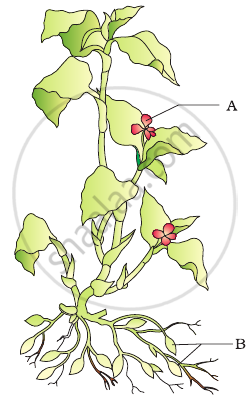Advertisements
Advertisements
Question
Write various advantages of vegetative propagation.
Solution
Advantages of vegetative propagation are:
- Vegetative propagation is the only method to obtain new plants in those plants where seed formation does not occur.
- This method is cheaper, convenient and rapid method of plant multiplication.
- It is the only method of reproduction in plants like grapes, roses, pineapple etc. which do not form viable seeds.
- Plants raised through vegetative propagation from a single plant form a genetically uniform population called a clone.
APPEARS IN
RELATED QUESTIONS
Name two plants which can be grown from their broken stems.
Describe the process of reproduction in Hydra with the help of labelled diagrams. What is the name of this process of reproduction?
One of the following organisms does not reproduce by fission. This is :
(a) Amoeba
(b) Leishmania
(c) Planaria
(d) Plasmodium
An organism which can reproduce by two asexual reproduction methods one similar to the reproduction in yeast and the other similar to the reproduction in Planaria is :
(a) Spirogyra
(b) Bryophyllum
(c) Hydra
(d) Sea anemone
A filamentous alga X is found in ponds, lakes and slow-moving streams. The filament of this alga simply breaks into two (or more) pieces on maturing and each piece then grows to become a complete new alga.
(a) Name an alga which X is likely to be.
(b) What is the colour of X?
(c) What is the method of forming new algae by the breaking of parent alga known as?
(d) An Amoeba also breaks up to form two daughter Amoebae. What is the difference in the splitting of Amoeba and splitting of this alga as a method of reproduction?
(e) Name one marine animal which reproduces in the same way as alga X.
Fill in the following blank with suitable word :
The process of fusion of gametes is called .............
State whether the following statement is true (T) or false (F):
Bacteria and yeast reproduce by sexual reproduction.
Write four lines on the following: Grafting
Many unicellular organisms reproduce by the process of ______
In the figure given below the plant bears two different types of flowers marked ‘A’ and ‘B’. Identify the types of flowers and state the type of pollination that will occur in them.

